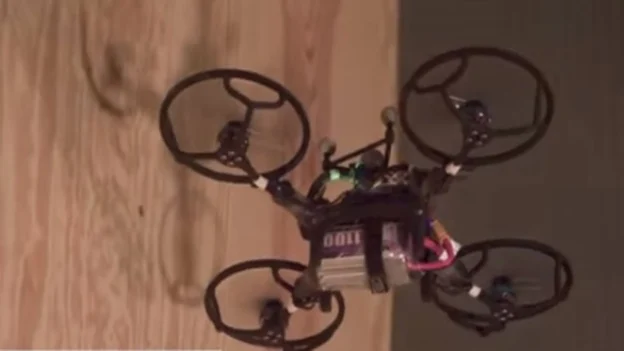Professor Dr. Kostas Alexis, director of the Autonomous Robot Laboratory at the Norwegian University of Science and Technology, has presented the development of autonomous robotic systems, specifically, “the Morphy robot”, with great results.
Morphy robot technology
The Morphy robot stands out for its innovative design that incorporates flexible joints and sensors in its arms. These joints, equipped with 3D Hall effect sensors, provide real-time updates on the robot’s morphology, allowing it to adapt to high-speed collisions and pass through openings narrower than its original dimensions.
Morphy’s total weight is only 260 grams, including a battery, a camera, a flight time depth sensor and an advanced 8-core processor, which gives it a high level of autonomy.
In addition, its structure is manufactured using elastic resin printing techniques, which contributes to its ability to withstand impacts and adapt to different environments. The objective of this development is to identify potential hazards and avoid them.
Scope in experiments and capabilities
To demonstrate Morphy’s capabilities, a series of rigorous experiments have been performed. In the first experiment, the robot’s ability of the robot to adapt to collisions at speeds of up to 3 m/s, showing remarkable endurance. In drop tests, Morphy withstood collisions at speeds of up to 7.6 m/s.
In a second experiment, the ability of the robot to passively transform and pass through openings smaller than its nominal dimensions was verified. Morphy flew in a straight line toward a wedge-shaped obstacle, adjusting his shape to pass through it without difficulty.
Finally, in a third experiment, Morphy’s ability to fly in a straight line and pass through a vertical wedge, narrower than its original dimension, was demonstrated. These experiments were documented with conventional and high-speed camera images, as well as synchronized plots showing the robot’s motion and the deflection of its arms.

A flying robot, aware and versatile. Source: Dr. Kostas Alexis
Morphy has a primary dimension of 25.2 cm, a thrust-to-weight ratio of 3.3 and an endurance of 12 minutes and 30 seconds, and is also under review for future applications and developments. On the official YouTube channel channel, the Morphy is presented, as well as other projects in technology and high-tech development.
Follow us on social networks and don’t miss any of our publications!
YouTube LinkedIn Facebook Instagram X
Source and photo: Autonomous Robots Lab

